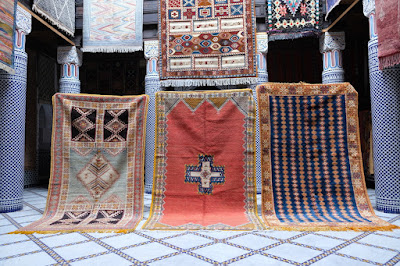Runners - A Multipurpose Decor Item!
Runner rugs are ordinary in hallways, event venues, hotels, restaurants, or other places. They typically have more length than width and are suitable for filling long narrow spaces. People place them in areas with a lot of traffic as the runners fit the hallways and help visitors follow a specific direction to the designated area. The runners protect the floor and bring texture and decor to empty spaces besides adding a comfort factor. They are available in different sizes, thicknesses, and materials. There are modern oriental rugs, flat weave rugs, and felt-ball rugs.
Where to Place Runner Rugs?
Hallways, narrow corridors, hardwood stairs, slippery floors, kitchen, living spaces, or large open floors are the best places to put runner rugs. Runner rugs lead to specific directions if placed in the hallway while they enhance decor and safety if fixed on stairs. Walking on carpets does not allow the noise of rushing footsteps in the place and saves from cold effects in winters. They help separate open living space from the kitchen or bedroom in a home and help in the direction of an open floor plan in a studio apartment.
How to Select A Runner?
The homeowners can select the runners based on material, durability, purpose, furnishing style, color, and texture. Material and weaving methods contribute to the durability of a runner, and any rug made with wool offers durability. As far as weaving is concerned, Moroccan runners made with wool by tying thousands of knots are excellent. The natural fibers of wool make the rugs dirt resistant and stretchable. Moreover, the users can easily clean them with a vacuum or wash.
Handmade Moroccan Runners
The indigenous tribes make Moroccan runners using local materials such as wool and natural coloring agents, including saffron, henna, pomegranate, and tea in their homes. They set up weaving looms at their places, and one or more people work on them, creating diverse designs without any preset pattern or diagram. Making each rug takes months as the process of handmade rugs involves knitting thousands of individually tied knots. The unique feature of such rugs is that each has a special symbolic tribal design.
The Berber tribes residing in the plains of Marrakesh and the terrain of Atlas mountains have been weaving handmade rugs for millennia. They have passed rug weaving craft to their heirs, who have continued this legacy due to the popularity and utility of handmade rugs as an essential household item. The users can get this invaluable item online from reliable distributors.
.jpeg)



Comments
Post a Comment